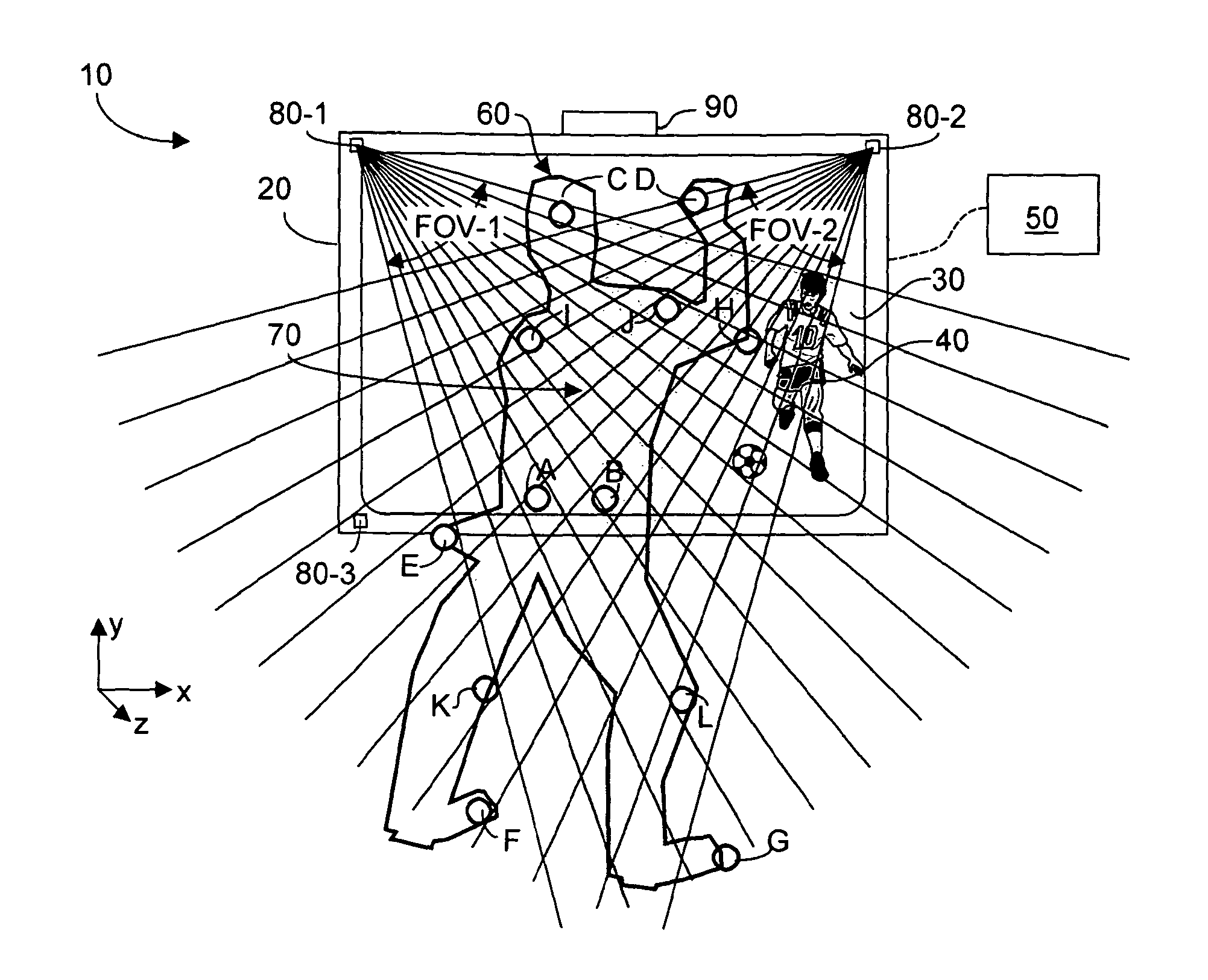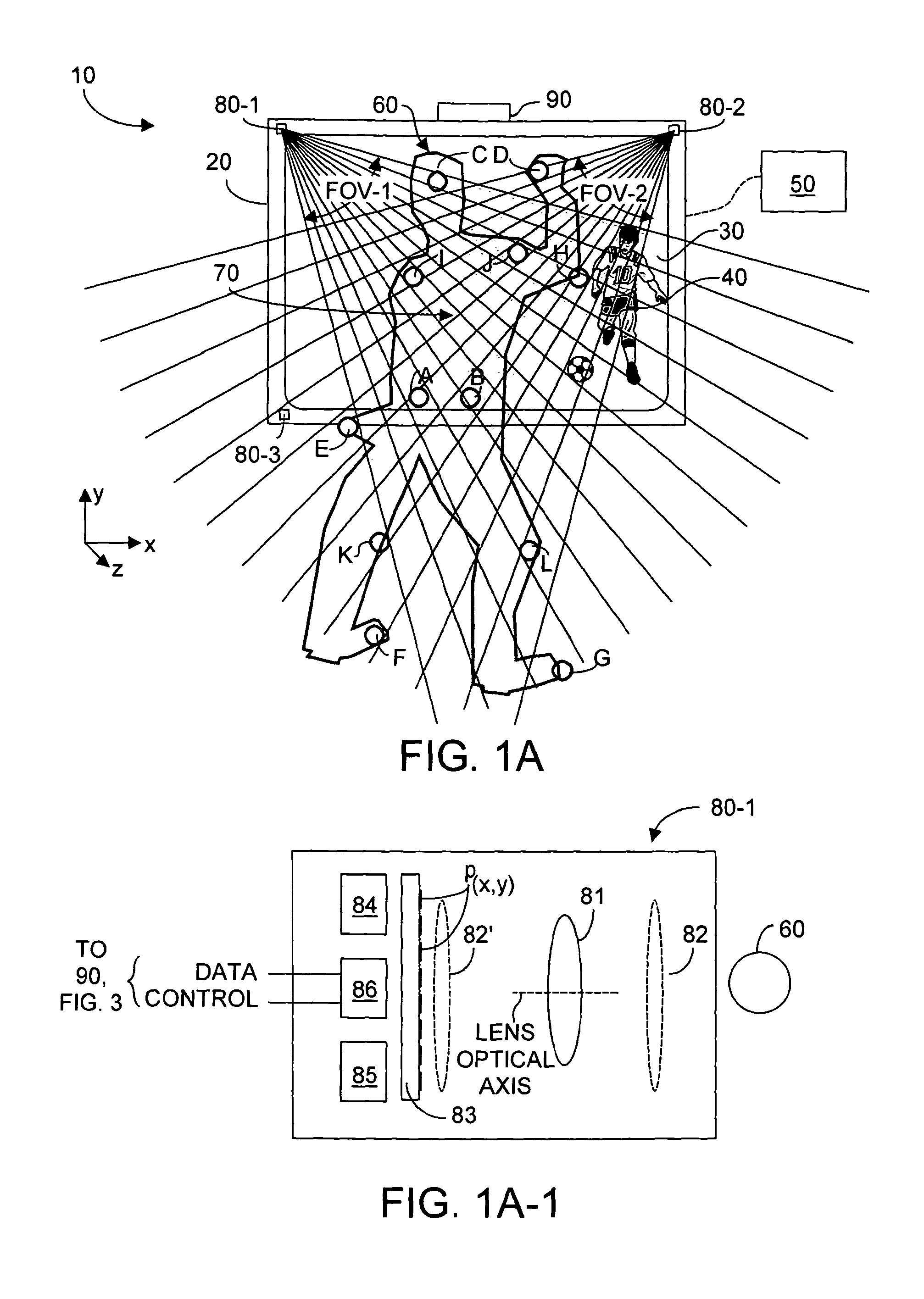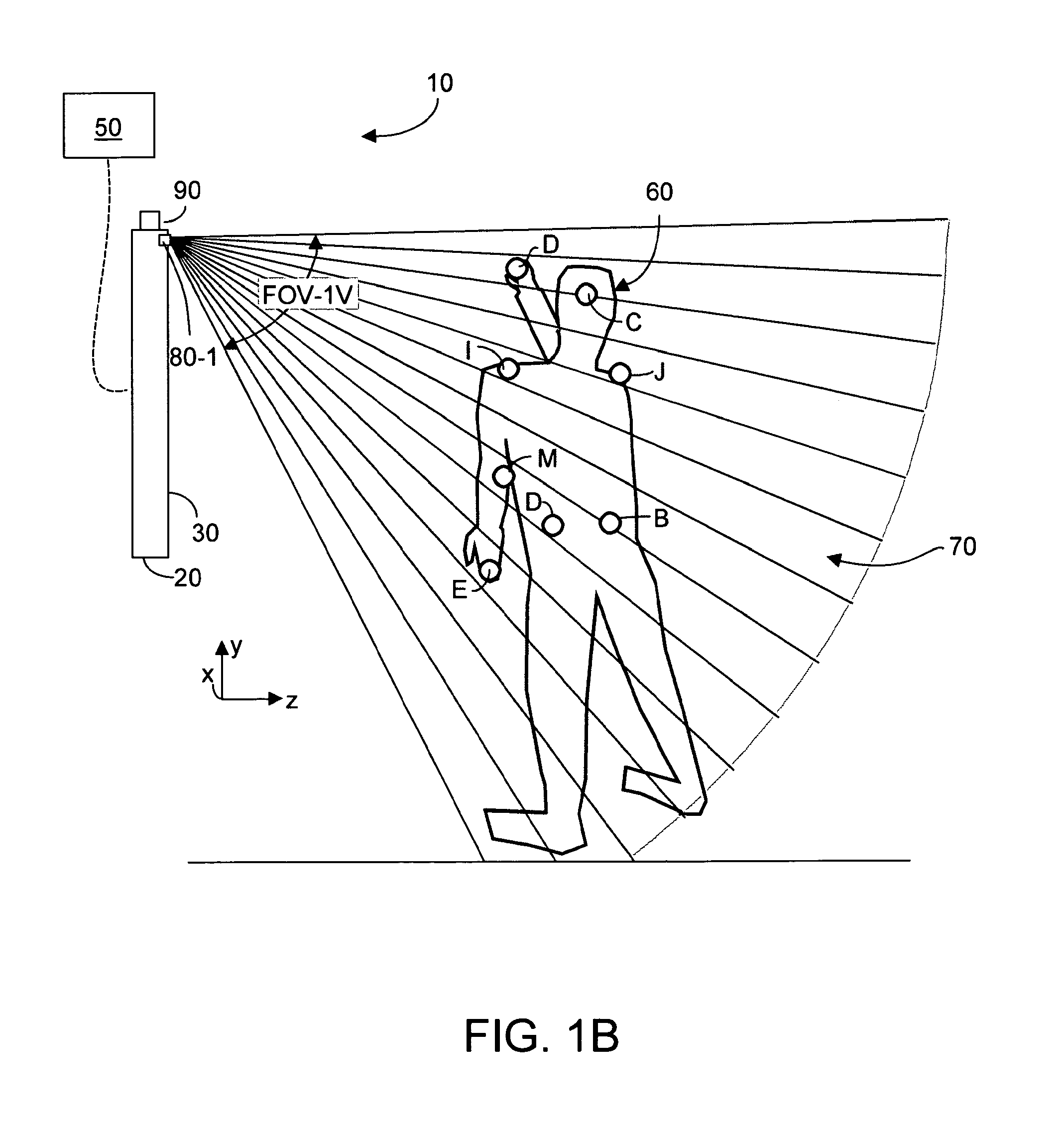Two-dimensional method and system enabling three-dimensional user interaction with a device
a three-dimensional user and device technology, applied in the field of two-dimensional methods and systems, can solve the problems of increasing the cost of the resultant system with increasing display size, lcd layer, adding to the overall thickness and cost of display and bezel, etc., and achieves low cost, low form factor, and low power consumption.
- Summary
- Abstract
- Description
- Claims
- Application Information
AI Technical Summary
Benefits of technology
Problems solved by technology
Method used
Image
Examples
Embodiment Construction
[0045]It is useful to review aspects of the priority Ser. No. 13 / 385,134 application (the '134 application) at this juncture. FIG. 1A is a front view of an embodiment of a system 10, according to the '134 application and to the present invention. In overview, system 10 includes a functional grid at least two cameras 80-1, 80-2, etc. disposed relative to a monitor or display 20 so as to image in two-dimensions interaction by a user or user object 60 with imagery 40 presented on the display surface 30. As used herein the terms “user” and “user object”, will be understood to include user 60, portions of user 60, perhaps a hand, a finger, a fingertip, as well as any object held by the user used in gesturing, perhaps a passive stylus or wand. The various cameras can operate cooperatively and independently albeit substantially simultaneously, as described herein under command of an electronic unit 90. Electronic unit 90 in system 10 processes two-dimensional frames of image data captured ...
PUM
 Login to View More
Login to View More Abstract
Description
Claims
Application Information
 Login to View More
Login to View More - R&D
- Intellectual Property
- Life Sciences
- Materials
- Tech Scout
- Unparalleled Data Quality
- Higher Quality Content
- 60% Fewer Hallucinations
Browse by: Latest US Patents, China's latest patents, Technical Efficacy Thesaurus, Application Domain, Technology Topic, Popular Technical Reports.
© 2025 PatSnap. All rights reserved.Legal|Privacy policy|Modern Slavery Act Transparency Statement|Sitemap|About US| Contact US: help@patsnap.com



